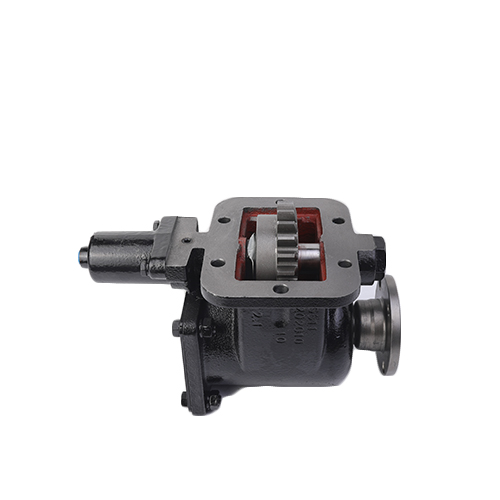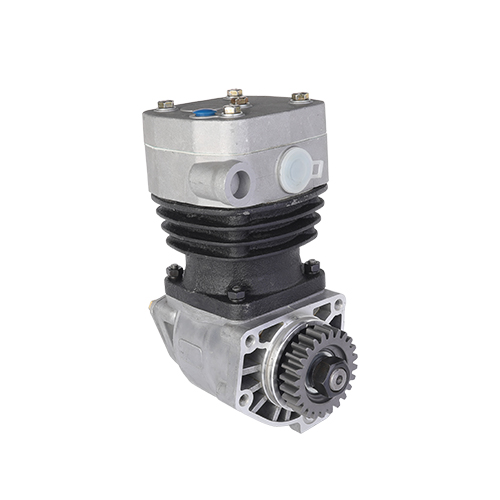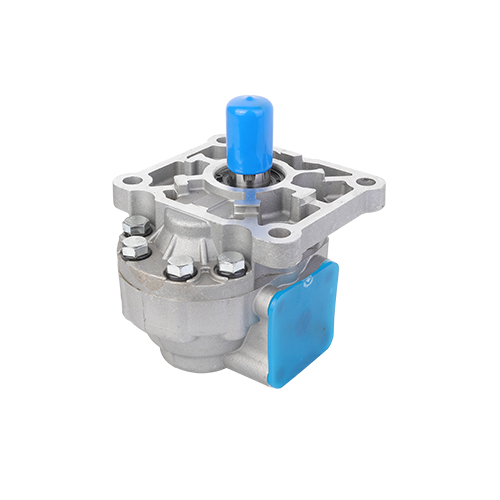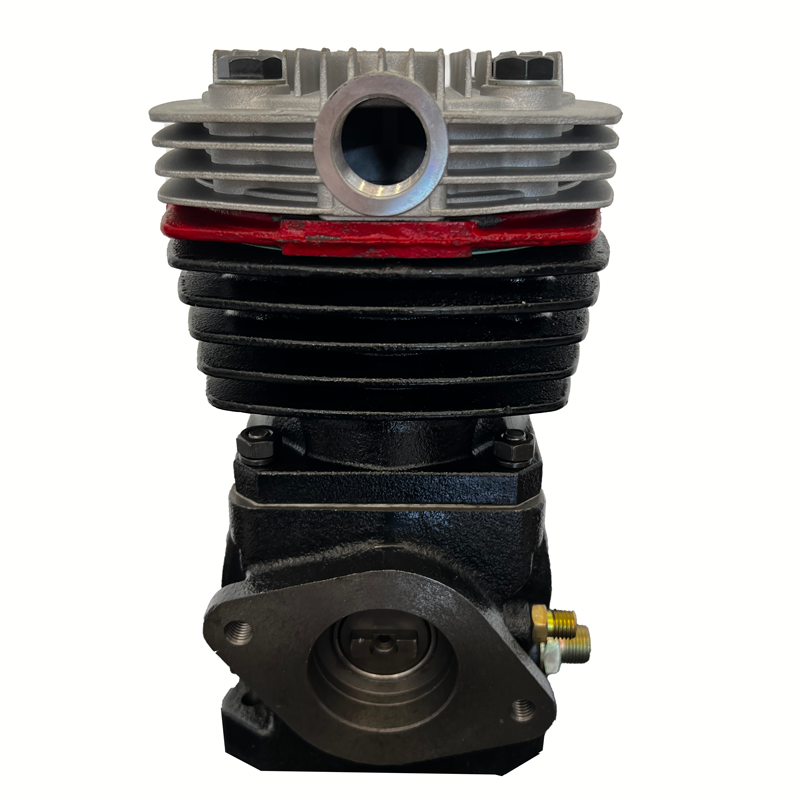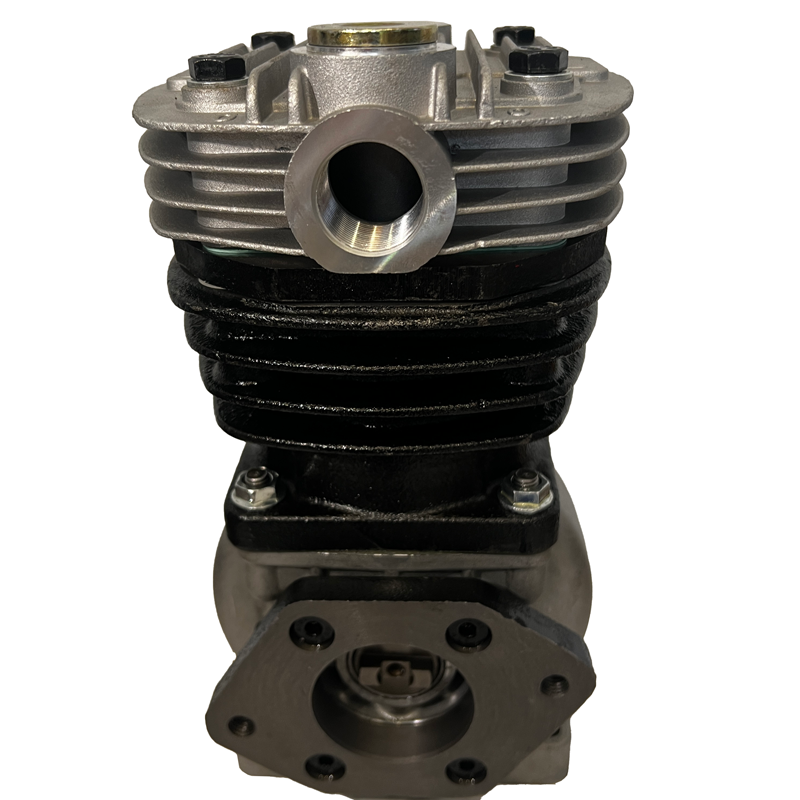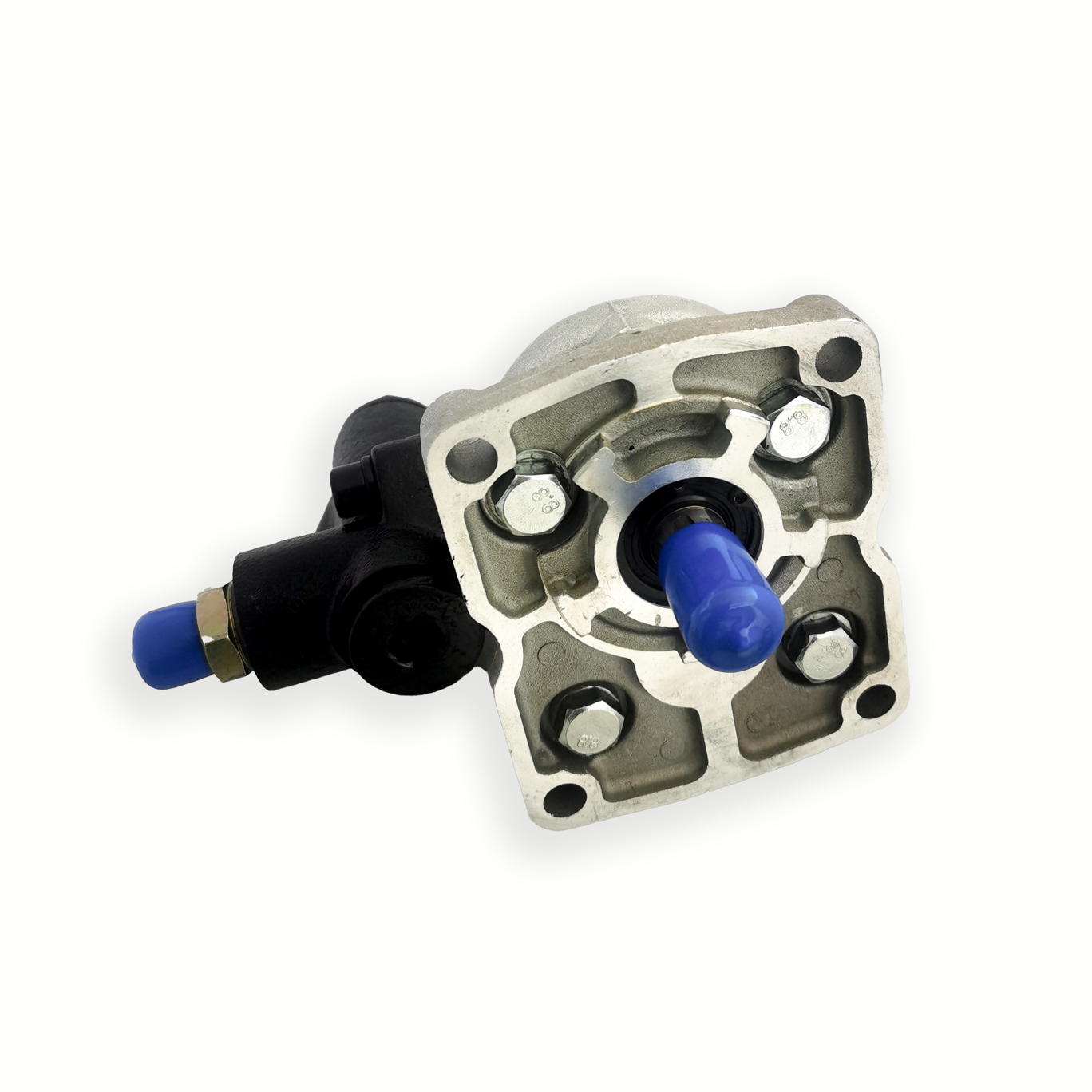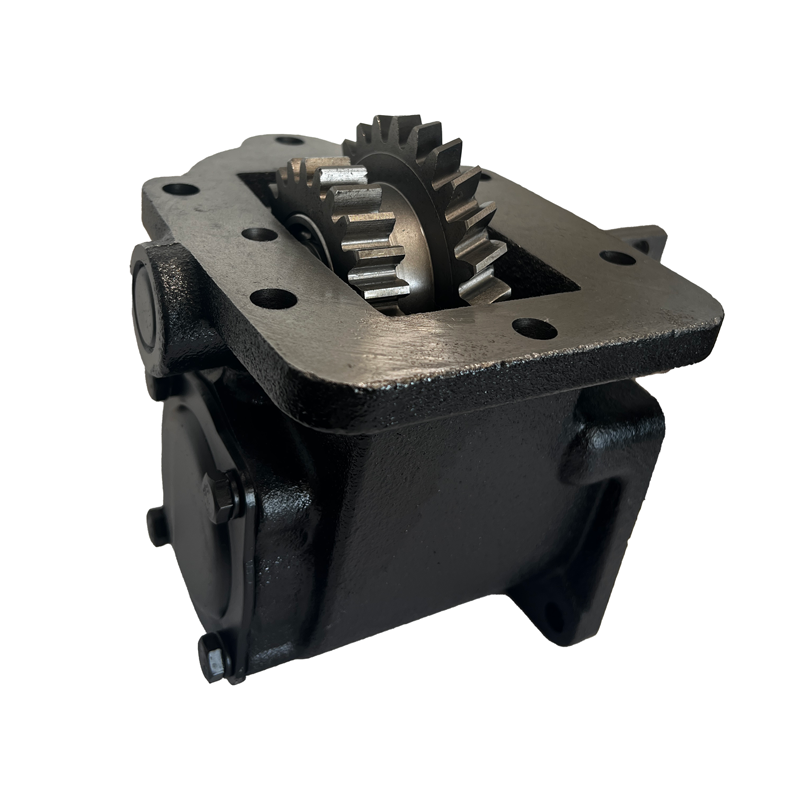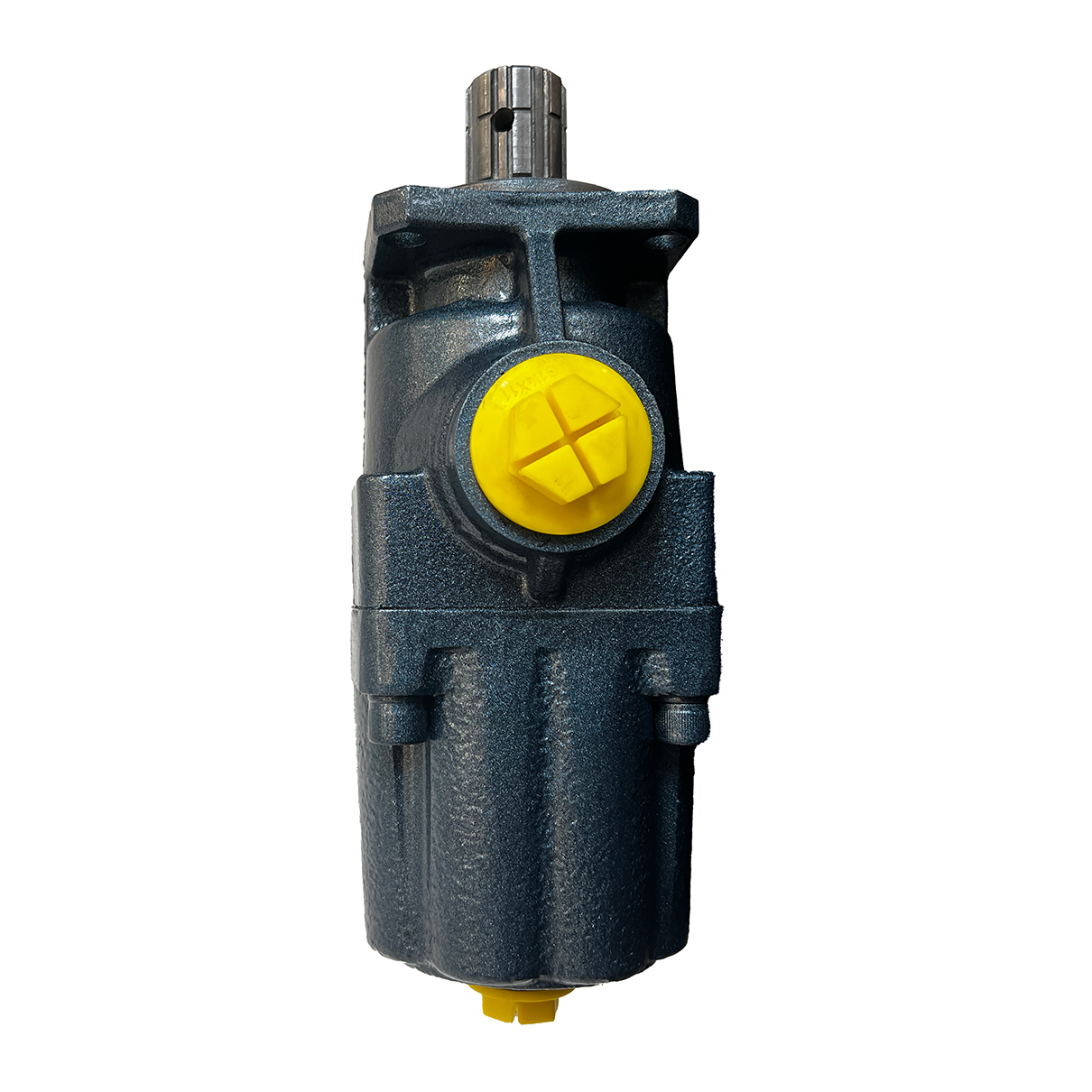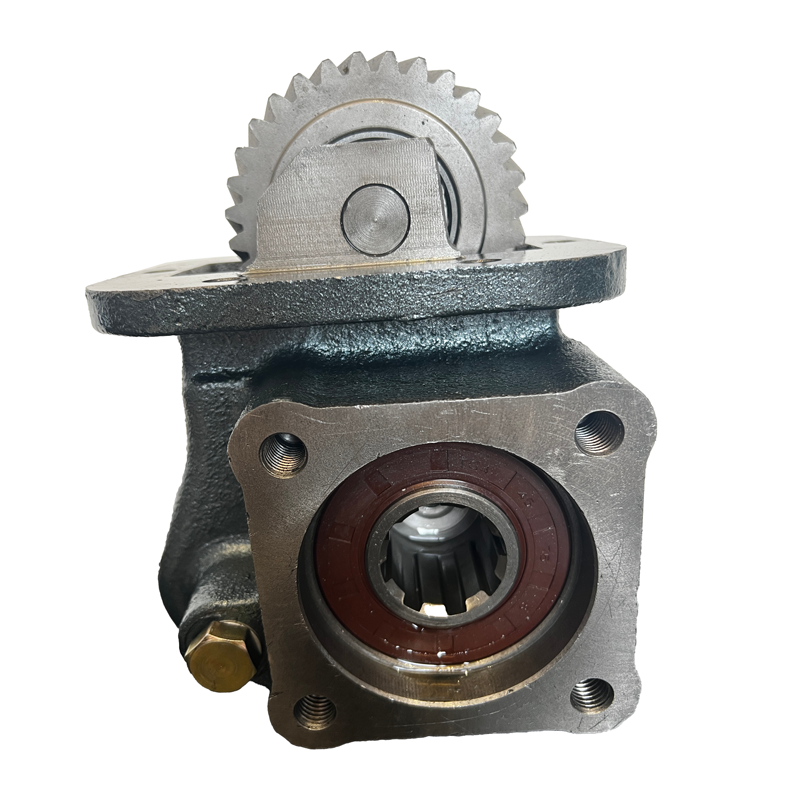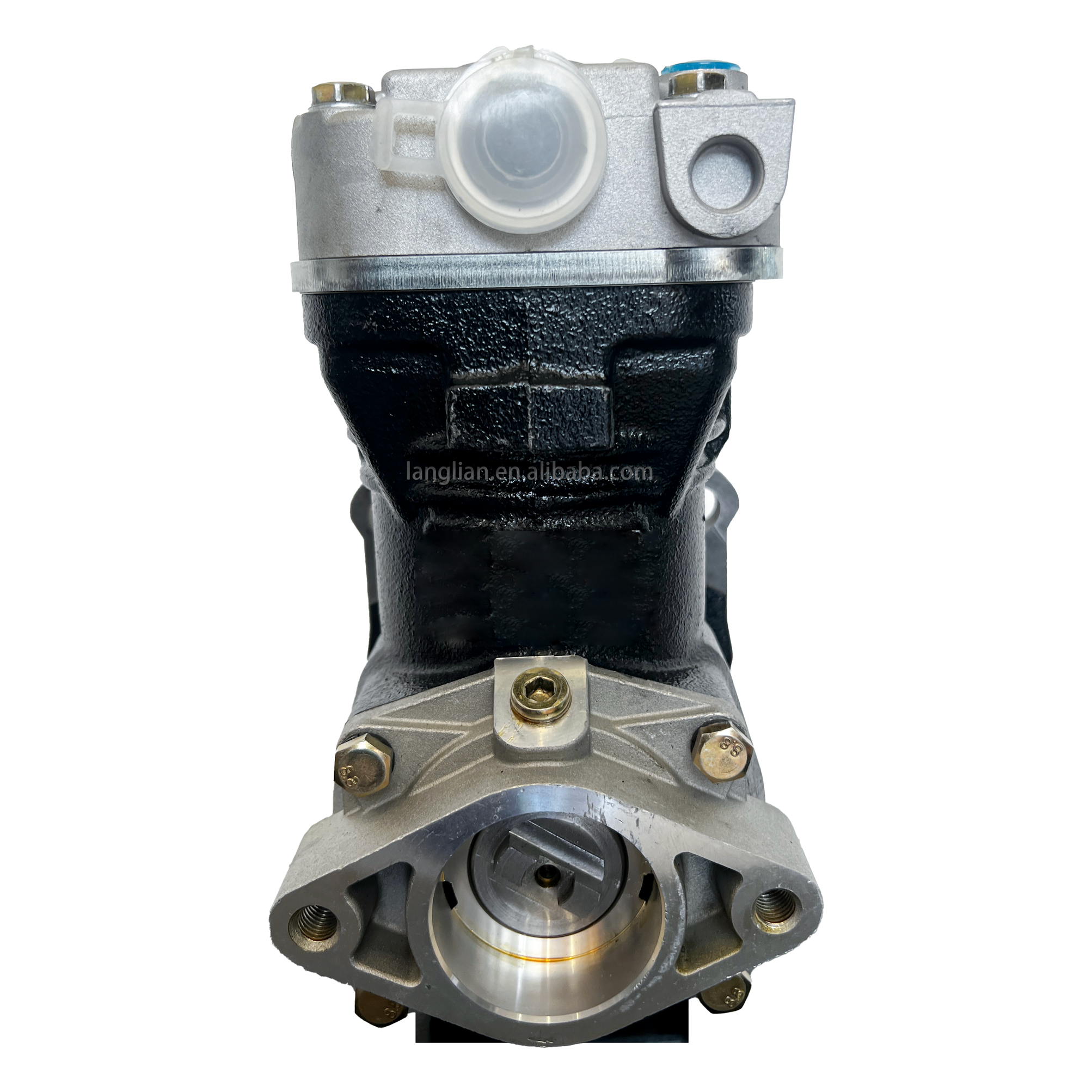Performance and Introduction of Two-Cylinder Air Compressors for Vehicles
1. Introduction to Two-Cylinder Air Compressors for Vehicles
the complex ecosystem of vehicle systems, the two-cylinder air compressor serves as a critical "power core" for pneumatic components, playing an indispensable role in ensuring the safe and efficient operation of vehicles—especially commercial vehicles like trucks, buses, and engineering vehicles. Unlike single-cylinder air compressors, this dual-cylinder design integrates two parallel compression chambers, which fundamentally addresses the limitations of single-cylinder models in air supply volume and pressure stability, making it a preferred configuration for vehicles with high pneumatic demand.
The origin of vehicle two-cylinder air compressors can be traced back to the gradual upgrading of vehicle braking systems and auxiliary pneumatic equipment. In the early days, single-cylinder air compressors were sufficient to meet the basic braking needs of small vehicles. However, with the development of heavy-duty transportation and the popularization of multi-functional pneumatic devices (such as air suspension, pneumatic door control, and air-powered accessories), the demand for compressed air volume, pressure response speed, and continuous supply capacity has surged. To fill this gap, manufacturers optimized the cylinder structure, increasing the number of cylinders to two while improving the compression mechanism, thus giving birth to the two-cylinder air compressor. Today, it has become a standard configuration in medium and heavy-duty commercial vehicles, and its application scope is gradually expanding to special vehicles such as emergency rescue vehicles and military vehicles, where reliable pneumatic support is crucial.
In terms of classification, two-cylinder vehicle air compressors can be categorized based on multiple dimensions to adapt to different vehicle models and working conditions. From the perspective of power transmission mode, they are mainly divided into crankshaft-driven and belt-driven types. Crankshaft-driven compressors are directly connected to the vehicle's engine crankshaft, leveraging the engine's power for operation—this type is widely used in heavy trucks and buses due to its high transmission efficiency and strong power output. Belt-driven compressors, on the other hand, are driven by the engine's accessory belt, offering greater flexibility in installation position and lower vibration; they are commonly found in light commercial vehicles and special-purpose vehicles.
From the cooling method perspective, there are air-cooled and water-cooled variants. Air-cooled models rely on a built-in fan or the vehicle's moving airflow to dissipate heat, featuring a simple structure, light weight, and low maintenance costs, making them suitable for dry and well-ventilated working environments. Water-cooled models, which use the vehicle's engine cooling system for heat exchange, have better heat dissipation efficiency and stable working temperatures, making them ideal for high-temperature regions or long-duration continuous operation scenarios (such as long-haul trucks driving in desert areas).
Additionally, based on pressure levels, two-cylinder air compressors can be divided into low-pressure (0.7-1.0 MPa) and high-pressure (1.0-1.6 MPa) types. Low-pressure models are mainly used for ordinary braking systems and pneumatic door control, while high-pressure models are designed for vehicles with high-demand pneumatic systems, such as those equipped with air suspension and pneumatic power steering.
2. Core Performance Indicators of Two-Cylinder Air Compressors for Vehicles
The performance of two-cylinder vehicle air compressors directly determines the reliability of the vehicle's pneumatic system, and its core performance can be evaluated through several key indicators. These indicators not only guide the design and production of manufacturers but also help users select the most suitable products based on actual needs.
2.1 Displacement (Air Supply Capacity)
Displacement, also known as air delivery volume, refers to the volume of compressed air (converted to standard atmospheric pressure) that the compressor can output per unit time, usually expressed in cubic meters per minute (m³/min) or liters per minute (L/min). For two-cylinder air compressors, the displacement is essentially the sum of the effective compression volumes of the two cylinders
operating in parallel, and it is affected by factors such as cylinder diameter, piston stroke, and rotational speed.
In practical vehicle applications, displacement is a "lifeblood" indicator. For example, a heavy-duty truck equipped with an air brake system, air suspension, and pneumatic clutch requires a continuous and sufficient air supply. If the compressor's displacement is insufficient, the brake system may experience delayed response (e.g., the brake pedal feels soft and the braking distance increases), and the air suspension may fail to adjust the vehicle height in time, affecting driving stability. Generally, medium-sized commercial vehicles require a two-cylinder air compressor with a displacement of 0.3-0.6 m³/min, while heavy-duty trucks and engineering vehicles need a displacement of 0.6-1.2 m³/min to meet the simultaneous operation of multiple pneumatic components.
To ensure stable displacement output, mainstream manufacturers adopt precision machining for cylinder bores and pistons to reduce internal leakage, and use high-quality piston rings to enhance sealing performance. Some advanced models also integrate variable displacement control technology—when the vehicle's pneumatic system pressure reaches the set value, the compressor automatically reduces the displacement to save energy; when the pressure drops, it quickly restores full displacement, balancing air supply and fuel efficiency.
2.2 Working Pressure
Working pressure, including rated discharge pressure and maximum working pressure, is another core indicator that reflects the compressor's ability to compress air. The rated discharge pressure is the stable pressure at which the compressor operates under normal working conditions (usually 0.8-1.2 MPa for vehicle use), while the maximum working pressure is the highest pressure it can withstand in
short-term overload (generally 1.2-1.6 MPa), which is a key guarantee for the system's safety.
The working pressure must match the vehicle's pneumatic system requirements. For instance, most vehicle air brake systems have a working pressure range of 0.7-0.9 MPa. If the compressor's rated discharge pressure is lower than 0.7 MPa, the brake cylinder cannot generate sufficient thrust, leading to weakened braking force; if the pressure is too high (exceeding 1.2 MPa), it may cause damage to the air reservoir, brake hoses, and other components, increasing the risk of air leakage or even explosion.
To control the working pressure accurately, two-cylinder air compressors are usually equipped with a pressure relief valve and a pressure switch. The pressure relief valve acts as a "safety valve"—when the system pressure exceeds the maximum working pressure, it automatically opens to release excess air, preventing overpressure damage. The pressure switch, on the other hand, controls the compressor's start and stop: when the system pressure drops to the lower limit (e.g., 0.7 MPa), the switch activates the compressor to start working; when the pressure rises to the upper limit (e.g., 0.9 MPa), the switch stops the compressor, ensuring the pressure remains within the safe range.
2.3 Energy Efficiency
In the context of global energy conservation and emission reduction, the energy efficiency of two-cylinder vehicle air compressors has become a key concern for manufacturers and users. Energy efficiency here mainly refers to the ratio of the effective compressed air energy output by the compressor to the energy input from the engine (expressed as energy efficiency ratio, EER), which directly affects the vehicle's fuel consumption and operating costs.
The energy loss of two-cylinder air compressors mainly comes from three aspects: mechanical friction loss (between piston and cylinder wall, crankshaft and bearing), gas leakage loss (internal leakage between piston ring and cylinder, external leakage at pipe joints), and heat loss (energy wasted due to temperature rise during compression). To improve energy efficiency, manufacturers have adopted a series of optimization measures. For example, using low-friction piston rings and needle roller bearings to reduce mechanical friction; applying high-precision honing technology to the cylinder inner wall to improve surface smoothness and reduce leakage; and designing efficient heat dissipation structures (such as multi-layer finned heat sinks for air-cooled models) to recover part of the heat energy and reduce heat loss.
Taking a heavy-duty truck as an example, a two-cylinder air compressor with high energy efficiency (EER ≥ 0.75) can save 3-5% of the engine's fuel consumption compared to a low-efficiency model (EER < 0.65) during long-haul transportation. Over a year of operation (assuming 100,000 km of driving), this can save nearly 1,000 liters of fuel, significantly reducing the user's operating costs.
2.4 Reliability and Durability
For vehicles that often operate in harsh environments (such as construction sites, mountainous roads, and high-temperature deserts), the reliability and durability of the two-cylinder air compressor are crucial. Reliability refers to the probability that the compressor can operate normally within a specified time and working conditions, while durability is measured by its service life (usually required to be ≥ 15,000 hours or 500,000 km of vehicle driving).
The factors affecting reliability and durability mainly include material selection, structural design, and manufacturing processes. In terms of materials, high-strength cast iron (such as HT250) is widely used for the cylinder block due to its excellent wear resistance and heat resistance; the piston is made of aluminum alloy (such as ADC12) to reduce weight and improve heat dissipation; and the crankshaft is made of forged steel (such as 40Cr) to enhance fatigue resistance. In structural design, manufacturers adopt a "integrated cylinder head" design to reduce the number of sealing surfaces and avoid air leakage; they also add a dust-proof cover and a moisture separator to prevent impurities and moisture from entering the compressor, which can cause internal wear.
To verify reliability and durability, manufacturers conduct a series of rigorous tests before the product is launched. These include a 1,000-hour continuous operation test (simulating long-term continuous work of the vehicle),


